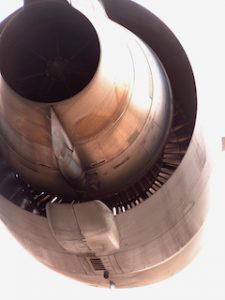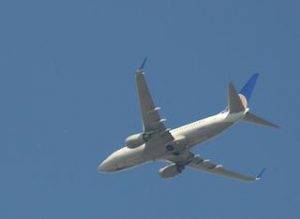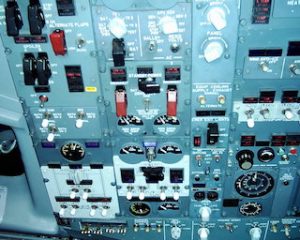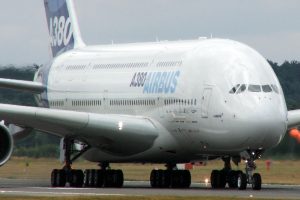Understanding Jet A1 Price And Its Factors
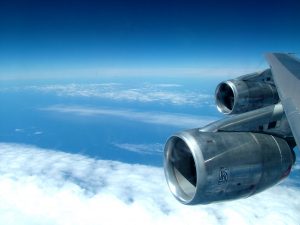 Jet A1 is the standard aviation fuel used by commercial airlines, military aircraft, and private jets worldwide. The price of Jet A1 is a critical factor for the aviation industry, as fuel costs constitute a significant portion of operating expenses. Monitoring the price of Jet A1 is vital for airlines, freight operators, and aviation enthusiasts to understand market trends and cost fluctuations. Several factors influence the price of Jet A1, from crude oil prices to geopolitical events, refinery outputs, and local taxes.
Jet A1 is the standard aviation fuel used by commercial airlines, military aircraft, and private jets worldwide. The price of Jet A1 is a critical factor for the aviation industry, as fuel costs constitute a significant portion of operating expenses. Monitoring the price of Jet A1 is vital for airlines, freight operators, and aviation enthusiasts to understand market trends and cost fluctuations. Several factors influence the price of Jet A1, from crude oil prices to geopolitical events, refinery outputs, and local taxes.
What determines the Jet A1 price?
The Jet A1 price is primarily determined by the global price of crude oil. Crude oil prices are set by supply and demand forces in the international market. When the cost of crude oil rises or falls, the price of Jet A1 also adjusts accordingly. Refining costs, distribution fees, and local taxes also play an essential role in setting the price of Jet A1 at airports or fuel depots.
Crude oil is refined into several products, including gasoline, diesel, and aviation fuel. Jet A1 is produced in large quantities during the refining process, and its price is influenced by the balance between demand for aviation fuel and other refined products. The location of refineries, transportation infrastructure, and refining capacity also impact Jet A1’s price, especially at regional levels.
The influence of global crude oil prices
The global price of crude oil is the most significant factor influencing the price of Jet A1. When crude oil prices rise, the cost of refining and transporting Jet A1 also increases. Consequently, the price of aviation fuel at airports and fueling stations typically follows this upward trend. Similarly, when crude oil prices decline, Jet A1 prices generally decrease as well.
The volatility of crude oil prices is often driven by supply disruptions, changes in OPEC production levels, or shifts in global demand. Natural disasters, such as hurricanes or geopolitical tensions in oil-producing regions, can also create price fluctuations. These factors make it difficult to predict Jet A1 prices accurately over time.
Local factors affecting jet A1 price
While crude oil prices set the global trend, local factors can significantly impact Jet A1 prices in specific regions. These factors include local taxes, government regulations, and refining capacities. For example, some countries impose higher taxes on aviation fuel, which increases the price of Jet A1. In regions where there are fewer refineries or limited distribution networks, transportation costs may drive up fuel prices as well.
Moreover, local supply and demand conditions can affect Jet A1 prices. When there is a surge in demand for aviation fuel during peak travel seasons, such as summer holidays or major events, fuel suppliers may adjust prices accordingly. Alternatively, during periods of reduced flight activity, prices may drop due to lower demand.
The role of geopolitical events in fuel pricing
Geopolitical events have a significant impact on the price of Jet A1. Political instability in major oil-producing countries, armed conflicts, or sanctions can disrupt the supply of crude oil. This disruption can lead to a surge in oil prices, directly influencing the cost of Jet A1. For instance, tensions in the Middle East or trade disputes between major nations often result in price hikes, as the global oil supply is at risk.
Furthermore, changes in international agreements or production cuts by OPEC countries also impact crude oil prices and, consequently, Jet A1 prices. When OPEC decides to reduce oil output to control prices, the cost of aviation fuel increases. These fluctuations are often unpredictable and can cause uncertainty in the aviation sector.
Refining and distribution costs
Refining costs are another essential component of the Jet A1 price structure. The process of converting crude oil into Jet A1 fuel involves complex and costly procedures. Refining costs include labor, technology, energy usage, and compliance with environmental regulations. Additionally, regional refineries with higher production costs may charge more for Jet A1.
Once refined, the fuel must be transported to airports, fueling stations, and aviation hubs. The cost of transportation depends on infrastructure quality, distance, and logistics. If an airport is located in a remote area with limited transportation routes, the distribution cost for Jet A1 may be higher. These transportation fees are passed on to consumers and can significantly affect the final price of aviation fuel.
Seasonal price variations
Like many commodities, the price of Jet A1 often experiences seasonal fluctuations. During the peak travel season, especially around holidays and special events, the demand for aviation fuel increases. This increase in demand can result in temporary price hikes, as fuel suppliers adjust to meet the needs of airlines and operators.
In contrast, during off-peak travel periods, such as post-holiday months, Jet A1 prices may drop due to reduced demand. Airlines may also take advantage of lower prices by purchasing larger quantities of fuel in advance, which can help them lock in more favourable rates.
Impact of airline fuel surcharges
Airlines often pass on the rising costs of Jet A1 to passengers through fuel surcharges. These surcharges are added to the base ticket price and can fluctuate based on changes in the price of aviation fuel. When Jet A1 prices increase significantly, airlines may raise fuel surcharges to protect their profitability. Conversely, when fuel prices drop, airlines may reduce surcharges to stay competitive.
Fuel surcharges can vary widely between airlines, depending on how much of the price increase is absorbed by the airline. Frequent flyers may notice this effect more, as fuel surcharges can contribute a substantial portion of the total airfare. The price of Jet A1 directly impacts these surcharges, making it a key consideration for both airlines and passengers.
Jet A1 price in different regions of Kenya
In Kenya, Jet A1 prices can vary based on several local factors. These include the location of major airports, transportation costs, and the supply chain. Nairobi’s Jomo Kenyatta International Airport (JKIA), being the country’s busiest airport, often experiences a more stable fuel supply, leading to slightly lower fuel prices compared to regional airports. However, remote airports or smaller airstrips may face higher fuel prices due to increased transportation and distribution costs.
Airlines operating in Kenya may also factor in the price differences between local airports when determining their operational costs. These price variations can affect ticket prices and cargo costs for both international and domestic flights.
Monitoring and predicting Jet A1 price fluctuations
Predicting the future price of Jet A1 is complex due to the numerous factors involved. Analysts and industry experts closely monitor crude oil market trends, geopolitical developments, and refining capacities to anticipate price changes. However, the volatility of the global oil market means that predictions can often be inaccurate.
In Kenya, aviation industry stakeholders must stay updated on international oil price movements, regional market trends, and any changes in the regulatory environment. Airlines and fuel suppliers often use hedging strategies to lock in favorable fuel prices in advance, which helps them mitigate the effects of price fluctuations. However, hedging involves financial risks and may not always yield favourable outcomes.
The role of international organisations in regulating fuel prices
International organisations such as the International Air Transport association and the International Civil Aviation organisation help monitor and regulate the global aviation fuel market. These organizations work closely with governments, airlines, and fuel suppliers to ensure fair pricing and transparency in the market.
IATA, for example, provides industry guidelines for fuel purchasing practices and aims to reduce volatility in aviation fuel pricing. These efforts help stabilise fuel costs for airlines and provide more predictability for passengers and operators alike.
Long-term outlook for Jet A1 prices
The long-term outlook for Jet A1 prices will likely be influenced by several factors, including the global shift towards renewable energy, advancements in aviation technology, and the demand for air travel. As countries aim to reduce their carbon emissions, there may be increased investment in alternative fuels, such as biofuels or hydrogen, which could eventually affect the demand for traditional Jet A1 fuel.
However, despite these potential changes, Jet A1 is likely to remain the primary fuel source for commercial aviation for the foreseeable future. Fluctuations in the price of Jet A1 will continue to be influenced by global oil markets, refining capacities, and regional supply-demand conditions.
Jet A1 price and its influence on the aviation industry
Jet A1 pricing directly influences the operational efficiency and financial stability of airlines. As fuel costs constitute a significant portion of an airline’s operating budget, any sudden increase in fuel prices can impact profitability. Airlines often adjust their pricing strategies, such as increasing ticket prices or surcharges, to cover higher fuel costs.
For passengers, fluctuations in Jet A1 prices can result in variable ticket pricing. High fuel prices may lead to more expensive airfares, especially for long-haul flights. On the other hand, when fuel prices drop, passengers may benefit from more affordable flights.
The future of Jet A1 pricing in Kenya and globally
The future of Jet A1 pricing will be influenced by a combination of global trends and local market conditions. In Kenya, ongoing infrastructure improvements, government policies, and regional fuel supply chains will continue to impact fuel prices at local airports. On a global scale, fluctuations in crude oil prices, geopolitical developments, and technological advancements in fuel production will drive future changes in Jet A1 prices.
As the aviation industry moves towards sustainability, the adoption of alternative fuels and renewable energy sources may reshape the market in the coming decades. However, for now, Jet A1 remains the primary fuel source for commercial and private aviation, and its price will continue to be closely linked to the global oil market.
Impact of jet A1 price on airline strategy and passenger costs
Jet A1 prices are a major determinant of airline costs. As fuel prices rise or fall, airlines adapt their pricing models. This can lead to fluctuating airfares for passengers, particularly for long-haul flights. Airlines often adjust their strategies based on fuel price predictions, hedging future costs to mitigate price volatility.


